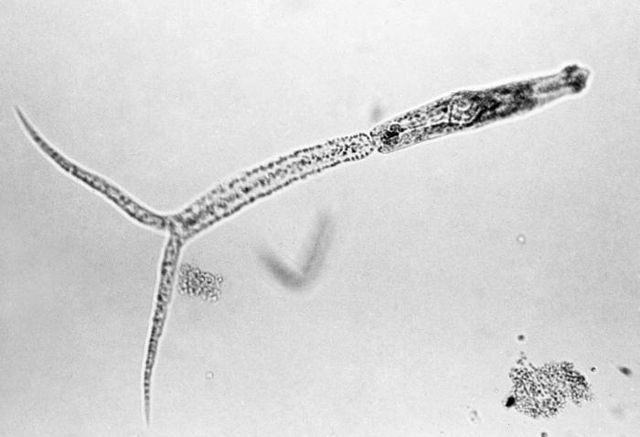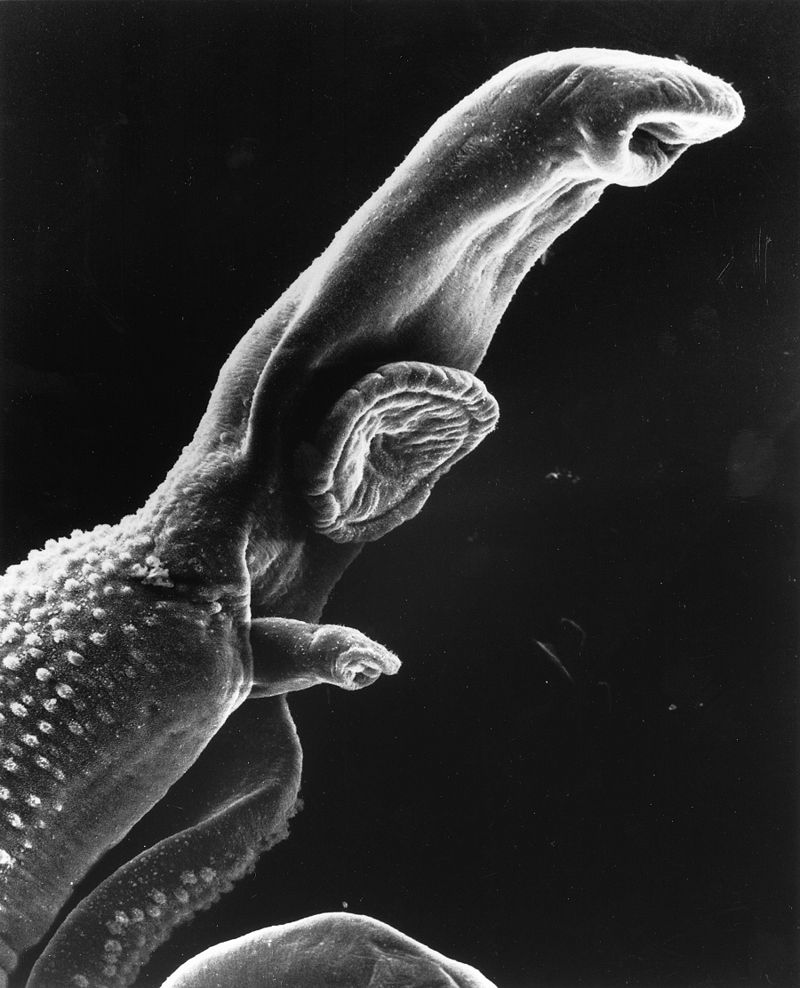

Rohr Laboratory of Ecology and Public Health
| Schistomiasis |
||
Scanning electron microscopy image of human schistome parasites (photo credit: Bruce Wetzel)
|
Research and Publications |
|
My interest in human flatworm infections began after I revealed that a widely used herbicide and fertilizer increased trematode infections of wildlife. Since then, I have explored whether similar phenomena are occurring for flatworms that cause schistosomiasis, a neglected tropical disease that defies control efforts, affects >240 million people worldwide, and rivals malaria and HIV in terms of global health burden. With current funds from a NIH-funded Ecology and Evolution of Infectious Diseases grant (collaborators on grant: Justin Remais Emory University, Sanna Sokolow and Giulio De Leo Stanford University, Gilles Riveau EPLS Senegal), my laboratory has shown that agrochemicals can affect schistosome transmission through multiple ecological pathways. These include: 1) bottom-up effects, whereby certain herbicides and fertilizer enhance attached algae consumed by snail intermediate hosts; 2) top-down effects, whereby insecticides reduce key predators of snails (prawns/crayfish and water bugs), and 3) mortality effects, whereby insecticides induce mortality of free-living stages of schistosomes. Now, my collaborators and I are conducting mesocosm experiments to identify candidate agrochemicals that can help feed 9 billion people without increasing disease risk and parameterize a mathematical model to predict food production and schistosome dynamics. Through already established collaborations with the Senegalese Ministry of Health, we will test the predictions of these models by administering drugs to clear schistosome infections in replicate villages, manipulating agrochemical use at the village level, and tracking human reinfection rates and food production. This research will allow us to provide recommendations to African governments on which agrochemicals will facilitate feeding their growing human population without increasing disease risk. To best predict schistosomiasis outbreaks, we are using several mathematical modeling frameworks, including dynamic energy budget (DEB) theory. DEB, a mechanistic, metabolic framework for estimating individual-level growth, development, and reproduction, has been shown to be superior to many other modeling approaches and has the advantage of integrating intrinsic traits of hosts and parasites with environmental factors. We are coupling our DEB model with an agent-based transmission model to capture between host dynamics. Several members of my laboratory are participating in the development of these models and life table experiments that manipulate host body size, resource availability, and climate to parameterize these models. We then intend to validate these models using mesocosm experiments and field data from Senegal so they can reliably predict how variation in resources and climate affect schistosomiasis risk. Sample Publications Halstead, N.T., Civitello, D.J., Rohr, J.R. 2015. Comparative toxicities of organophosphate and pyrethroid insecticides to aquatic macroarthropods. Chemosphere 135:265-271 Civitello, D.J., Rohr, J.R. 2014. Disentangling the effects of parasite exposure and host susceptibility on parasite transmission: an illustration with the human zoonotic parasite, Schistosoma mansoni. Journal of Animal Ecology 83:1379–1386 Rohr, J.R., Schotthoefer, A.M., Raffel, T.R., Carrick, H.J., Halstead, N., Hoverman, J.T., Johnson, C.M., Johnson, L.B., Lieske, C., Piwoni, M.D., Schoff, P.K., Beasley, V.R. 2008. Agrochemicals increase trematode infections in a declining amphibian species. Nature 455: 1235-1239 Featured on the cover For a full list of publications, please see the Publications page on this website. |
||
